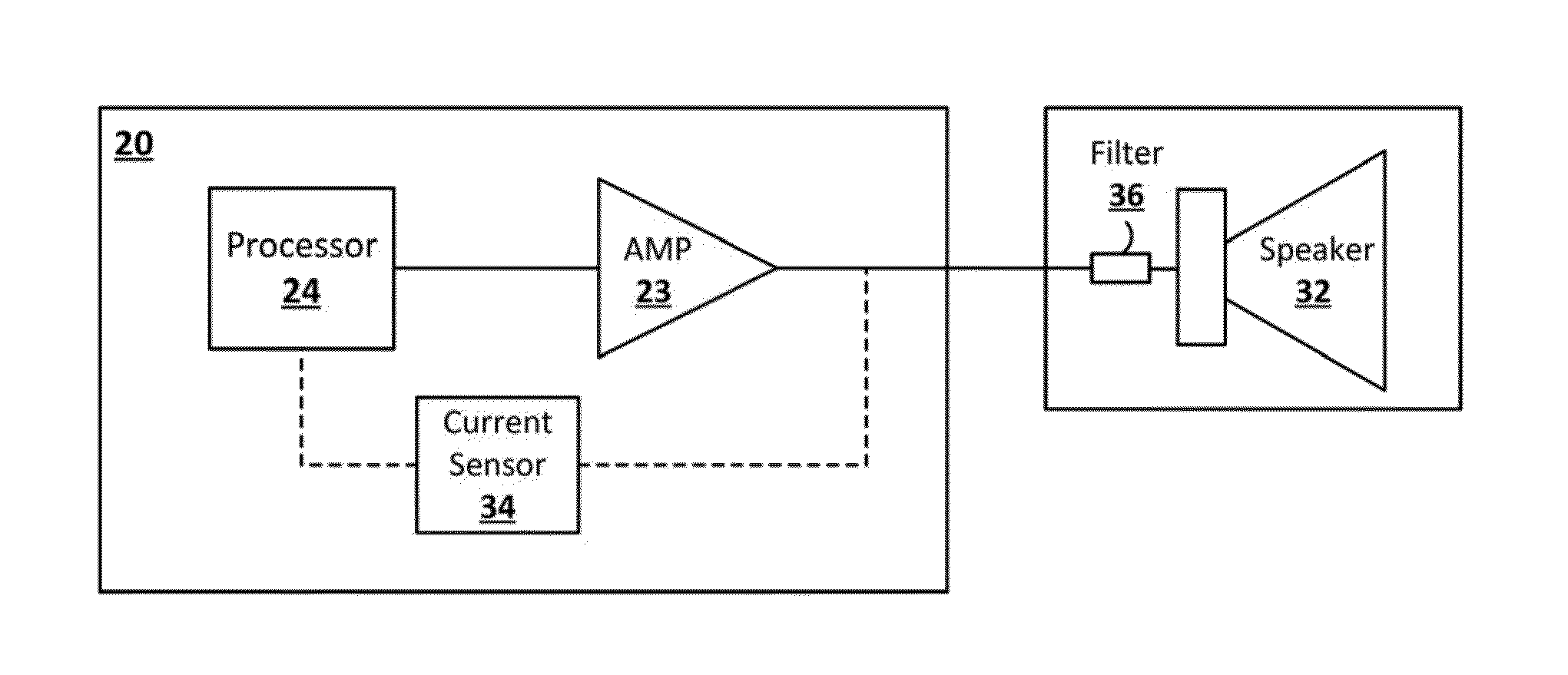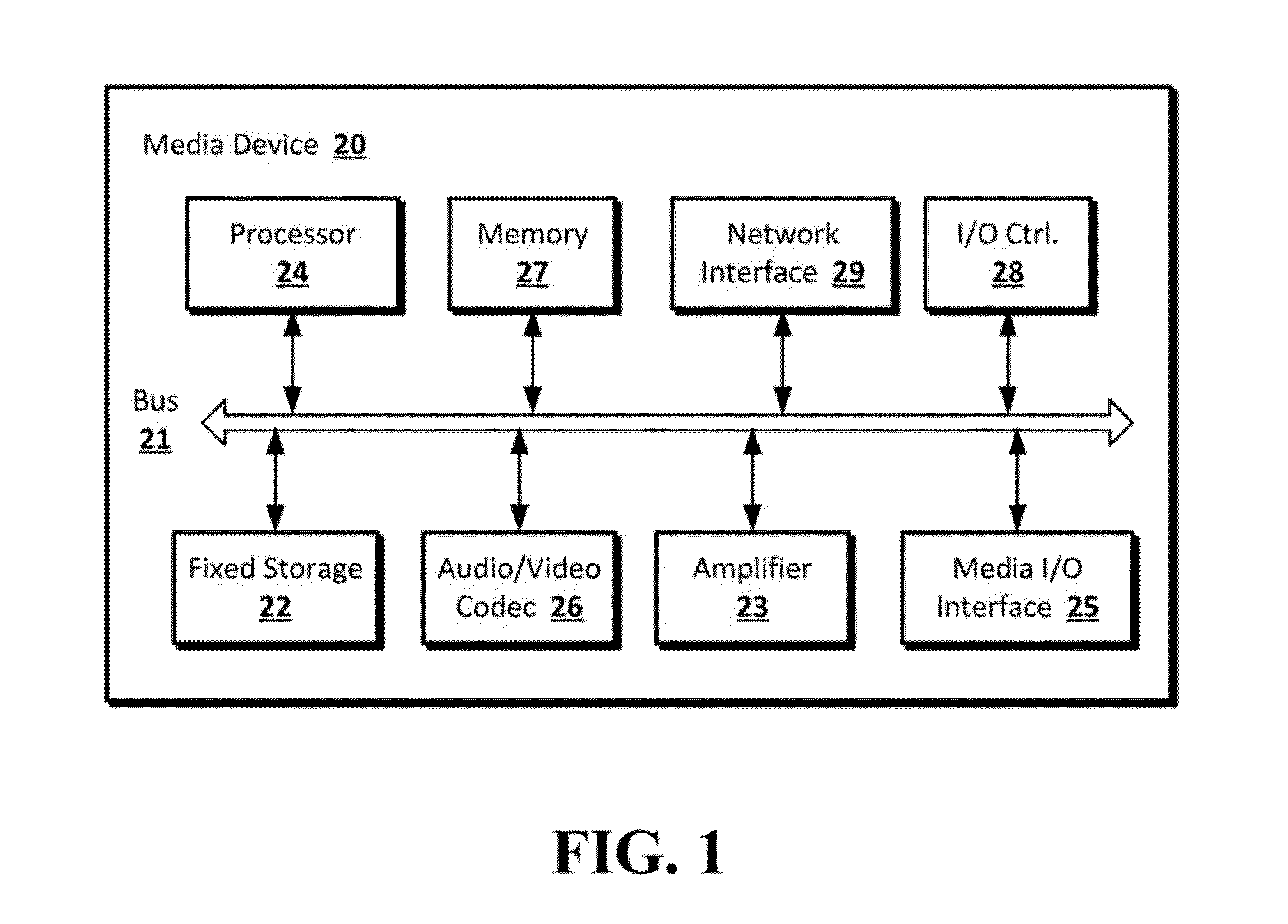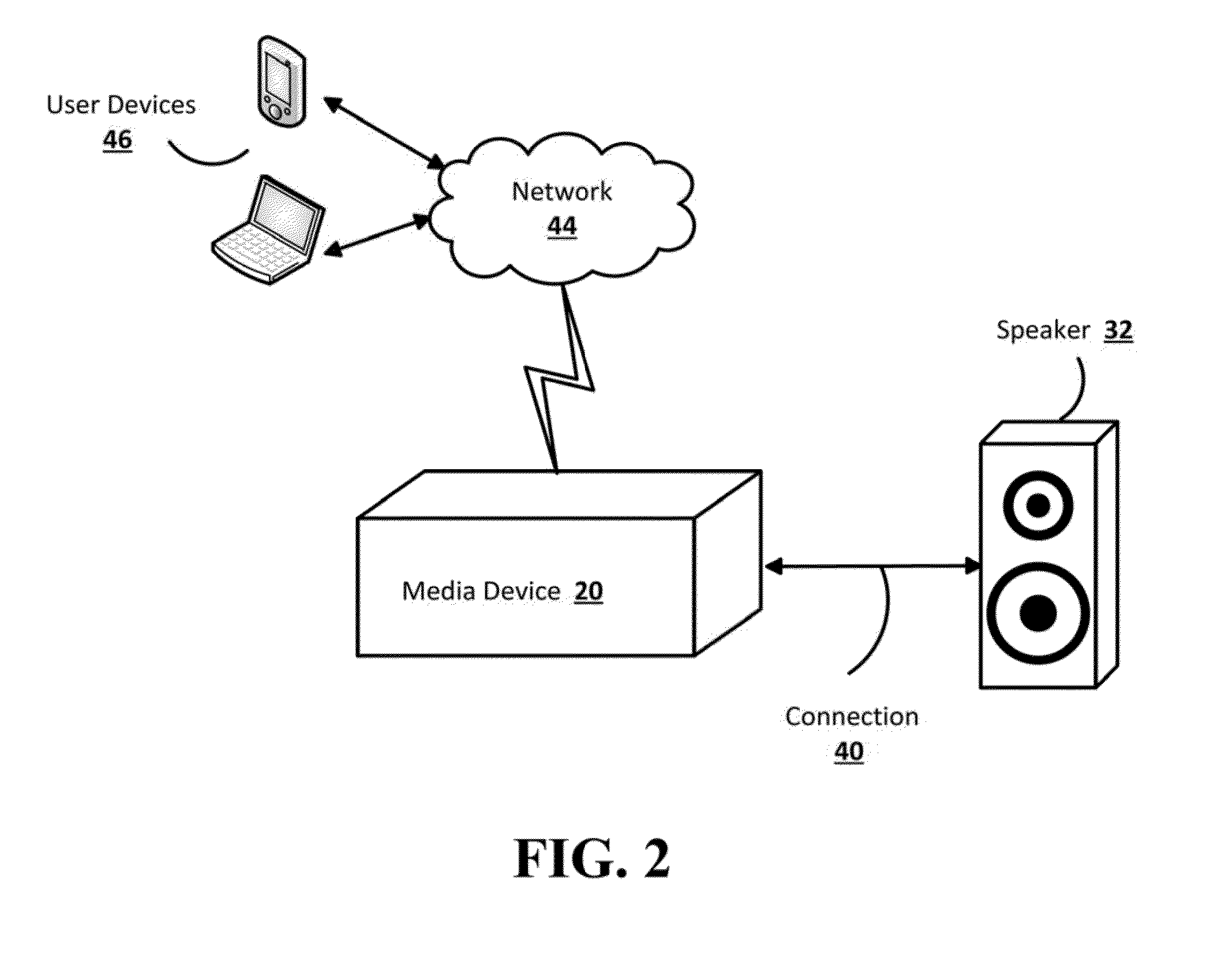Impedance sensing for speaker characteristic information
a technology of characteristic information and impedance sensing, which is applied in the direction of electrical equipment, etc., can solve the problem of not being able to achieve optimal sound reproduction
- Summary
- Abstract
- Description
- Claims
- Application Information
AI Technical Summary
Benefits of technology
Problems solved by technology
Method used
Image
Examples
Embodiment Construction
[0013]Speakers (e.g. “loudspeakers”) from various manufactures may have differing characteristics. In order to improve audio performance, a media device may customize DSP settings based on characteristics of an attached speaker. In implementations of the disclosed subject matter, these characteristics may be determined by sending a signal through a filter of an attached speaker and measuring impedance. The signal may be a probing signal that produces no audible effect from the speaker. The signal may progress through one or more frequency ranges. When the signal progresses through a frequency range, the impedance may be measured and an impedance-frequency relationship may be generated. The relationship may include, for example, an impedance vs. frequency curve. This relationship may be generated and analyzed to determine characteristics of the speaker. For example, characteristics such as the number, size, frequency response, resonance frequency, and nominal impedance of the drivers...
PUM
 Login to View More
Login to View More Abstract
Description
Claims
Application Information
 Login to View More
Login to View More - R&D
- Intellectual Property
- Life Sciences
- Materials
- Tech Scout
- Unparalleled Data Quality
- Higher Quality Content
- 60% Fewer Hallucinations
Browse by: Latest US Patents, China's latest patents, Technical Efficacy Thesaurus, Application Domain, Technology Topic, Popular Technical Reports.
© 2025 PatSnap. All rights reserved.Legal|Privacy policy|Modern Slavery Act Transparency Statement|Sitemap|About US| Contact US: help@patsnap.com



